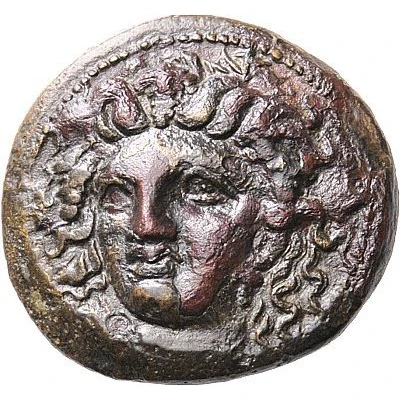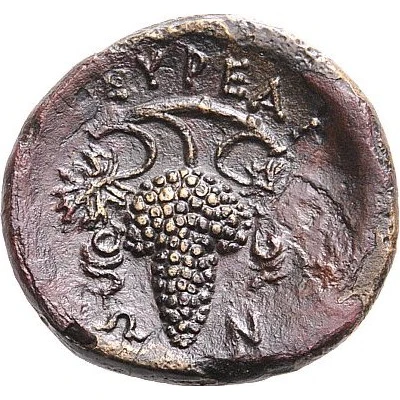


© Nomos AG
Tetrachalkon 352 BC - 344 BC
| Bronze | 7.54 g | 22.0 mm |
| Issuer | Eurea (Thessaly) |
|---|---|
| Type | Standard circulation coin |
| Years | 352 BC - 344 BC |
| Value | Tetrachalkon (1⁄12) |
| Currency | Drachm |
| Composition | Bronze |
| Weight | 7.54 g |
| Diameter | 22.0 mm |
| Shape | Round (irregular) |
| Technique | Hammered |
| Demonetized | Yes |
| Updated | 2024-10-10 |
| Numista | N#170723 |
|---|---|
| Rarity index | 100% |
Reverse
Bunch of grapes on stalk with two leaves
Script: Greek
Lettering:
ΕΥΡΕΑΙ
Ω Ν
Interesting fact
The Tetrachalkon coin was used as a form of currency in the ancient Greek city-state of Eurea in Thessaly during the 4th century BC. The coin's name, Tetrachalkon, comes from the Greek words "tetra," meaning four, and "chalkos," meaning copper, as it was originally worth four copper coins. However, due to inflation, its value decreased over time, and it eventually became worth only one copper coin. Despite this decrease in value, the Tetrachalkon remained an important coin in the region and was widely used for trade and commerce.